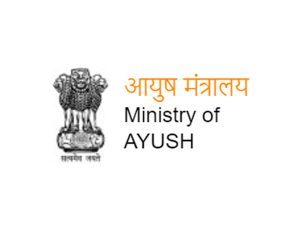Predicting heart disease through eye scan
16 min read
Predicting heart disease through eye scan. Sundar Pichai reveals Google’s AI breakthrough: A quick eye scan that can predict your risk of heart disease, offering a potential alternative to traditional CT scans, MRIs, and X-rays. Nucleus_AI 377 Stories Monday June 19, 2023, 4 min Read Aparadigm shift in the health tech industry is on the horizon, spearheaded by Sundar Pichai, CEO of Google, and the tech giant’s cutting-edge artificial intelligence (AI) technologies. The recent announcement by Pichai revealed a groundbreaking development: using Google’s AI, cardiovascular events can now be predicted through an eye scan, signifying a potential departure from traditional diagnostic methods like CT scans, MRIs, and X-rays. The Power of Google’s AI in Health Tech The journey began four years ago when a joint team of researchers from Google and Aravind Eye Hospital embarked on a mission to develop an automated tool for detecting diabetic retinopathy, a leading cause of blindness globally. The algorithm they developed could recognize the signs of the disease and deliver a diagnosis within seconds when supplied with a patient’s retinal photos. The algorithm is expected to be given the green light to operate independently soon, changing the landscape of eye disease detection and management. But the AI’s capabilities didn’t stop there. Earlier this year, Google debuted an algorithm capable of identifying a person’s sex, smoking status, and predicting the five-year risk of a heart attack, all based on retinal imagery. The AI had the ability to pick up on problems that the people who trained it couldn’t, opening up a world of possibilities for early detection of other diseases such as dementia, multiple sclerosis, Parkinson’s, Alzheimer’s, and even schizophrenia. AI and the Eye: A Window to Cardiovascular Health The eye, specifically the retina, is a window into the body’s overall health. The rear interior wall of the eye, or the fundus, is filled with blood vessels that reflect the body’s overall health. By studying their appearance, doctors can infer critical information like an individual’s blood pressure, age, and smoking habits, all of which are important predictors of cardiovascular health. To train their cardiovascular prediction algorithm, Google and Verily’sscientists used machine learning to analyze a medical dataset of nearly 300,000 patients. This data included eye scans as well as general medical data. Neural networks were then used to mine this information for patterns, learning to associate telltale signs in the eye scans with the metrics needed to predict cardiovascular risk, such as age and blood pressure. When tested, Google’s AI was able to distinguish between the retinal images of two patients, one who suffered a cardiovascular event in the following five years and one who did not, 70% of the time. This performance was only slightly lower than the commonly used SCORE method of predicting cardiovascular risk, which requires a blood test and makes correct predictions 72% of the time. The Future of Health Diagnostics This revolutionary method of assessing cardiovascular risk not only makes it quicker and easier for doctors, but it also signals a shift towards a new AI-powered paradigm for scientific discovery. The AI algorithm is finding new ways to analyze existing medical data, pointing to the possibility that, with enough data, artificial intelligence could generate entirely new medical insights without human direction. Furthermore, the potential for this technology goes beyond high-tech medical facilities. In rural vision centers, which may not have access to specialized gear, an affordable, portable solution involving a smartphone, a relatively inexpensive condensing lens, and a DIY retinal camera could enable vision screenings on the go. Patients could take a picture, upload it to the cloud, and receive a diagnosis in moments, demonstrating the vast potential of this technology. While the concept of an AI doctor independently generating new diagnoses might be a distant prospect, the research suggests that the idea is not entirely far-fetched. As Sundar Pichai’s announcement shows, Google’s AI is already making strides towards a future where traditional diagnostic methods may become supplementary to the insights we can gain from our eyes. What lies ahead is a world where a quick eye scan could uncover hidden health issues and predict potential cardiovascular events, revolutionizing the way we approach healthcare and diagnostics . In the hands of Google’s AI, every eye tells a story, and each story is a step closer to a healthier future. As we navigate this exciting era of health tech, the quote, “To understand the body, look to the eye” rings truer than ever before. The vision of health care is getting clearer, and it’s looking directly into our eyes.





